- Blog
- How to Fill Out a CMR Form - Ultimate Guide
How to Fill Out a CMR Form - Ultimate Guide
What is a CMR? How to fill out a CMR? We got you covered! Let’s dive into all the details behind this important road cargo document.

In this article, we explain the CMR consignment note and how to fill it out.
In international road transport, paperwork is essential. The CMR records the agreement between the sender, the carrier, and the receiver, and serves as proof of the contract of carriage.
Based on an international convention, the CMR ensures transparency and fairness. A correctly completed note confirms the transfer of responsibility, describes the shipment, and is the main reference in case of disputes.
This guide will take you step by step through what a CMR is and how to complete it.
|
|---|
|
1. What is a CMR consignment note in shipping terms? |
|
2. How many CMR copies are there? |
|
3. How to fill out a CMR consignment note? |
|
4. A brief history of CMR |
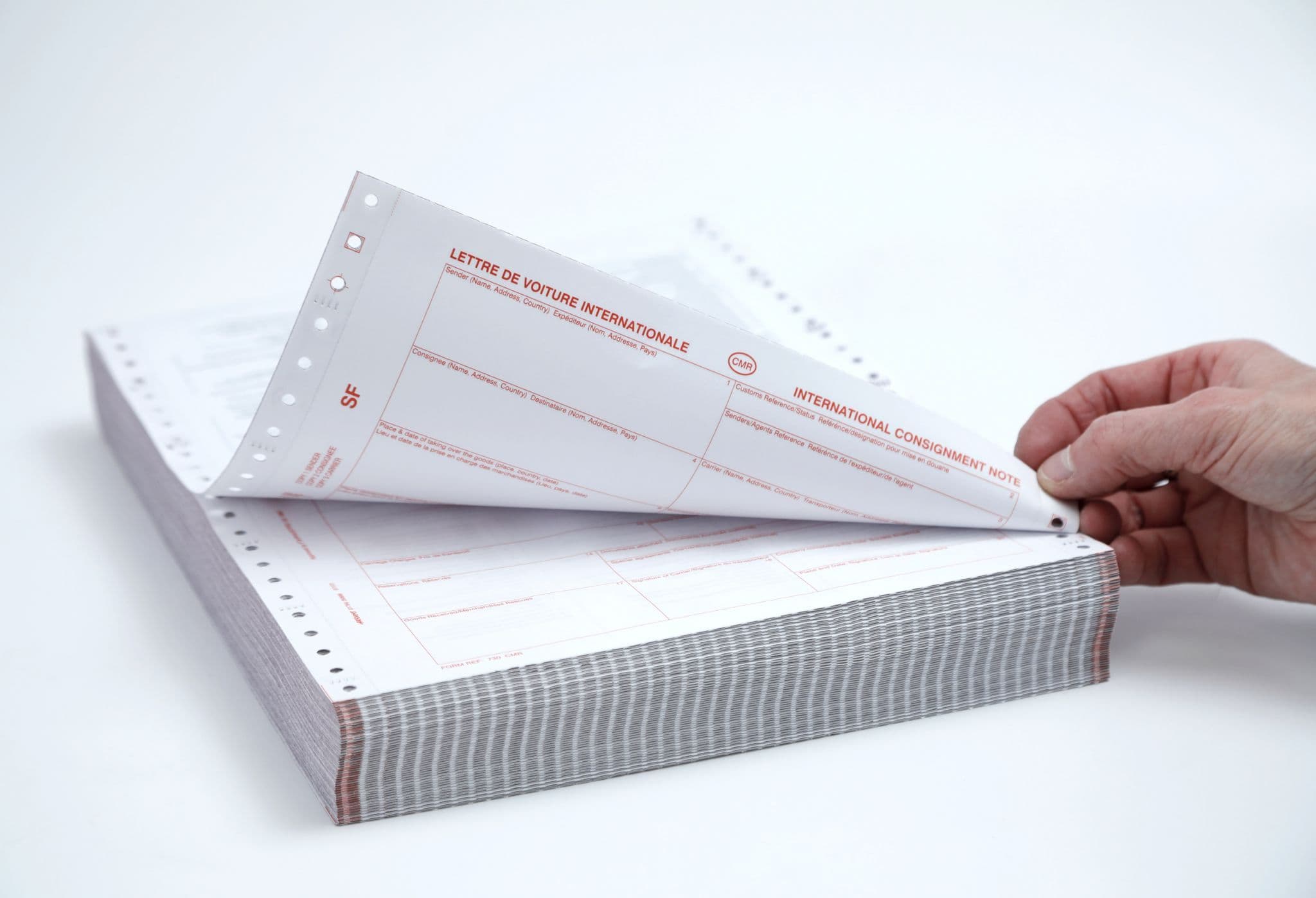
What is a CMR consignment note in shipping terms?
CMR consignment note is a legal document used in international road transport. It records the agreement between the sender (consignor) and the carrier (transport company).
The CMR works like a passport for goods. It shows what is being shipped, where it comes from, and where it is going.
It also clearly outlines the responsibilities and liabilities of the different parties involved throughout the transit process.
An important feature is that the CMR is a negotiable document. Ownership of the goods can be transferred by endorsing the note, which means they can even be sold while still in transit.
The CMR note also serves as a receipt. When the carrier signs it, they confirm that the goods were received for transport. When the receiver signs it, they confirm delivery in the right condition. If goods are lost or damaged, the CMR can be used to claim compensation.
It is also accepted as proof in transactions without VAT, useful in case of a financial audit.
The CMR is therefore a multi-purpose document: it is a contract, a receipt, a record of goods, and a transferable document. Its detailed format and legal foundation make it a cornerstone of safe and organized international road transport.

How many CMR copies are there?
A CMR note usually comes in four copies in different colors, each with its own purpose:
- Sender's or Consignor’s copy: For the sender or consignor. This copy serves as proof that the consignor handed over the goods to the carrier under the agreed terms.
- Receiver’s or Consignee’s copy: This copy travels with the goods and goes to the receiver or consignee upon delivery. Once the goods are received and the consignee signs the note, the signed document proves that the delivery was successful.
- Carrier's copy: This copy is kept by the carrier. Proof that they have received the goods and are obligated to deliver them to the consignee according to the conditions stated in the contract.
- Administrative copy: The final copy is reserved for administrative purposes.
All of these copies should be filled out identically. The only difference is who signs and stamps each copy, and when.
Having multiple copies ensures that every party keeps a full record of the transaction, and that one copy always travels with the goods. This is essential for transparency, accountability, and smooth international transport.
 eCarsTrade tip! Every party must use the CMR correctly. To accept a potential claim, most dealers, including eCarsTrade, require that all details are officially written on the CMR.
eCarsTrade tip! Every party must use the CMR correctly. To accept a potential claim, most dealers, including eCarsTrade, require that all details are officially written on the CMR.
If you are a transport company, make sure to note any issues or irregularities on the CMR during pick-up. This is the only way to confirm whether a problem happened before or after transport.
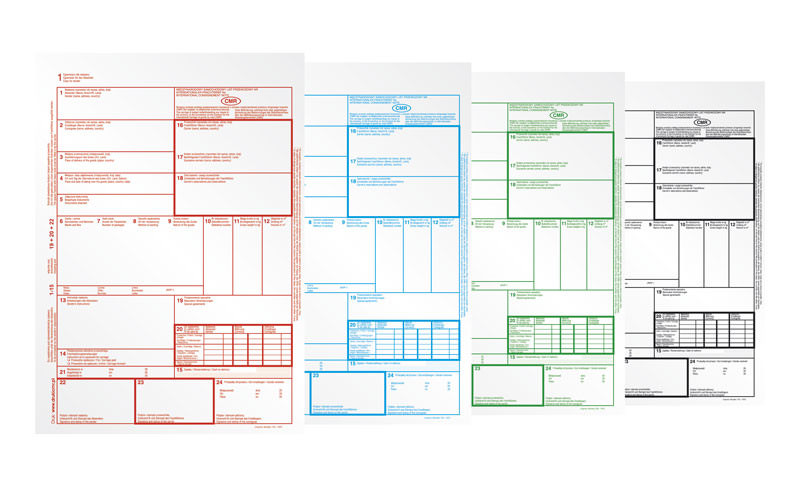
How to fill out a CMR consignment note?
For this section, we will be using the official IRU CMR example.
CMRs might differ slightly from transport company to transport company, but they are the same in essence.
 eCarsTrade tip! Please note that every legit CMR has a document number. If the CMR doesn’t have a number, it’s probably a fake.
eCarsTrade tip! Please note that every legit CMR has a document number. If the CMR doesn’t have a number, it’s probably a fake.

This is how to fill out a CMR note:
✔ Sender (consignor): At the top of the CMR note, write the full name and address of the sender (consignor).

✔ Receiver (consignee): Name and address of the receiver/consignee of the vehicles. The address must match the invoice exactly.

✔ Place and date of taking over the goods: Indicate where and when the carrier received the vehicles from the sender. This carrier must already fill this in when they arrive to pick up the car.

✔ Place of delivery: Write the location where the vehicles will be delivered. It must match the address given in the consignee information.

✔ Instructions: Write any special instructions for the carrier here. This may include specific handling requirements or particular delivery conditions.

✔ Carrier: Details of the transport company moving the goods. This section usually includes the company stamp and the license plate number of the transport truck.

✔ Reservations and observations: The carrier uses this section to note the condition of the goods at pick-up and to record any observations during delivery.
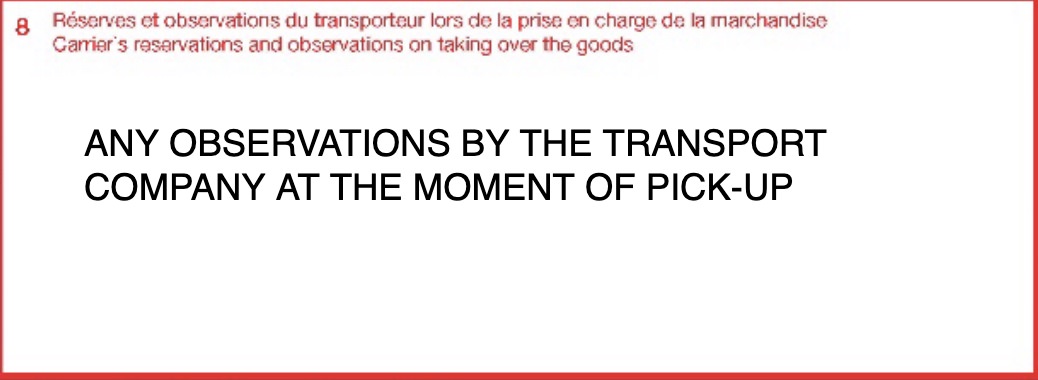
✔ Documents: Indicate which documents were provided with the vehicle at the time of pick-up.

✔ Description of goods: Provide details about the vehicles being transported. Include the quantity, brand, model, VIN number, and any identifying marks. Note any issues or comments about the vehicles in this section as well.
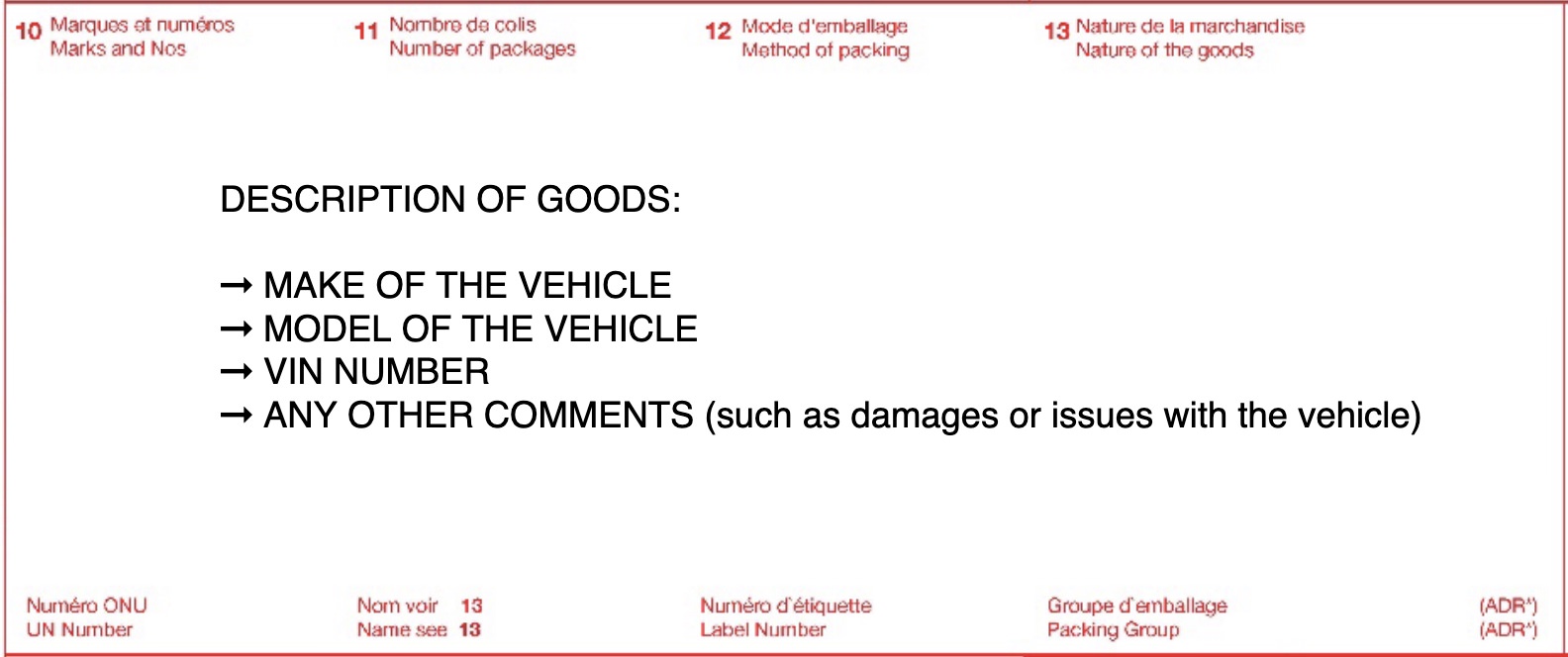
✔ CMR creation: Place and date of the creation of the CMR note.

✔ Signature and stamp of the sender
✔ Signature and stamp of the carrier
✔ Signature and stamp of the receiver: Include the place of arrival, time of arrival and time of departure of the transport.

 eCarsTrade tip! When filling in the CMR note, be as specific as possible. The CMR is both a legal contract and a detailed record of the goods. In case of misunderstandings or disputes, it is the first document checked, so accuracy is essential.
eCarsTrade tip! When filling in the CMR note, be as specific as possible. The CMR is both a legal contract and a detailed record of the goods. In case of misunderstandings or disputes, it is the first document checked, so accuracy is essential.
► See our example of a fully filled-in CMR consignment note.
► Information needed in the CMR consignment note is required by law, as seen under Articles 5 and 6 of the Convention on the Contract for the Internation Carriage of Goods by Road (C M R) and Protocol of Signature, done at Geneva on 19 May 1956.
The future of the CMR - Digital consignment notes (e-CMR)
 Important! eCarsTrade still only accepts the paper CMR during the carrier's pick-up of the vehicles.
Important! eCarsTrade still only accepts the paper CMR during the carrier's pick-up of the vehicles.
The use of e-CMR (electronic consignment notes) is slowly expanding in Europe but still represents less than 1% of road transport operations due to interoperability and legal challenges.
The EU’s eFTI Regulation now provides a legal framework, and from 2027 authorities must accept certified electronic transport documents.
Several countries are moving faster: Spain plans to make e-CMR mandatory around 2026, Benelux extended its pilot until 2027, and Germany, Austria, and Hungary have already joined the e-CMR protocol.
With ongoing efforts to standardize platforms and ensure cross-border interoperability, e-CMR is set to become the future standard for international road transport.

A brief history of CMR
The CMR Convention (Convention relative au contrat de transport international de marchandises par route) was signed in Geneva in 1956 to standardize international road transport.
Its purpose was to simplify procedures, harmonize documentation, and create a common legal framework for moving goods across borders.
Today, the convention is recognized far beyond Europe. As of 2022, 58 countries had adopted it, showing the central role of the CMR consignment note in regulated and reliable international transport.
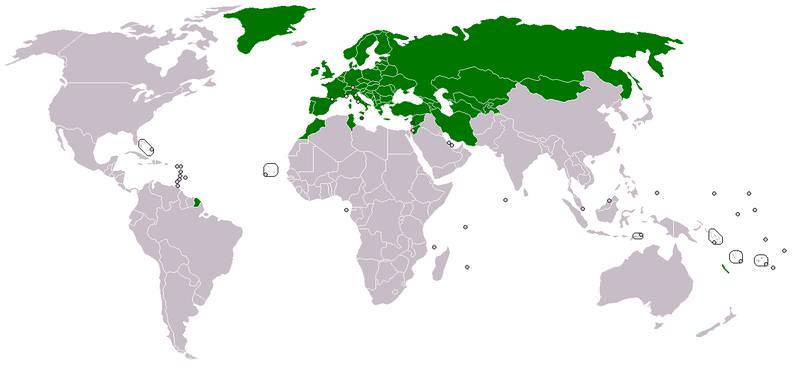
Overview of countries who ratified the CMR Convention
IRU, The World Road Transport Organization, revised the CMR model and issued a new one in 2007, which is the one we use today.
FAQ
► How to fill out a CMR?
To fill out a CMR, you need to provide details about the sender, receiver, carrier, place of pickup, place of delivery, vehicle information (such as VIN, make, model), and any special instructions. Each party signs the document, and multiple copies are created for sender, carrier, and receiver.
► Who issues a CMR document?
The CMR document is usually issued by the carrier (transport company). However, in practice, it can also be prepared by the sender and then confirmed by the carrier.
► Do I need to fill out a CMR for a car?
Yes. For transporting vehicles, a CMR must be filled out. It serves as proof of delivery, confirms the vehicle’s condition at pickup, and protects both buyer and seller in case of disputes.
► How do I get a CMR document?
CMR forms can be obtained from transport companies, logistics providers, or specialized suppliers of shipping documents. They are available as paper forms, and in some countries also in digital format (e-CMR).
Road transport and the CMR
As we explored the CMR, we hope this guide gave you a clear understanding of its role, structure, and how to complete it. The CMR is an essential tool for keeping international trade smooth and reliable.
Remember: a well-filled CMR is the first step toward safe transport and successful transactions.
Stay connected to our blog for more practical guides and insights to support your work in the automotive industry.
eCarsTrade non è solo una piattaforma di aste online: siamo anche una risorsa preziosa per i concessionari e i commercianti di auto. Il nostro blog offre consigli di esperti su vari argomenti, tra cui:
_01JE9WH8CRTMG3B3WDH56WNJHD.png)

